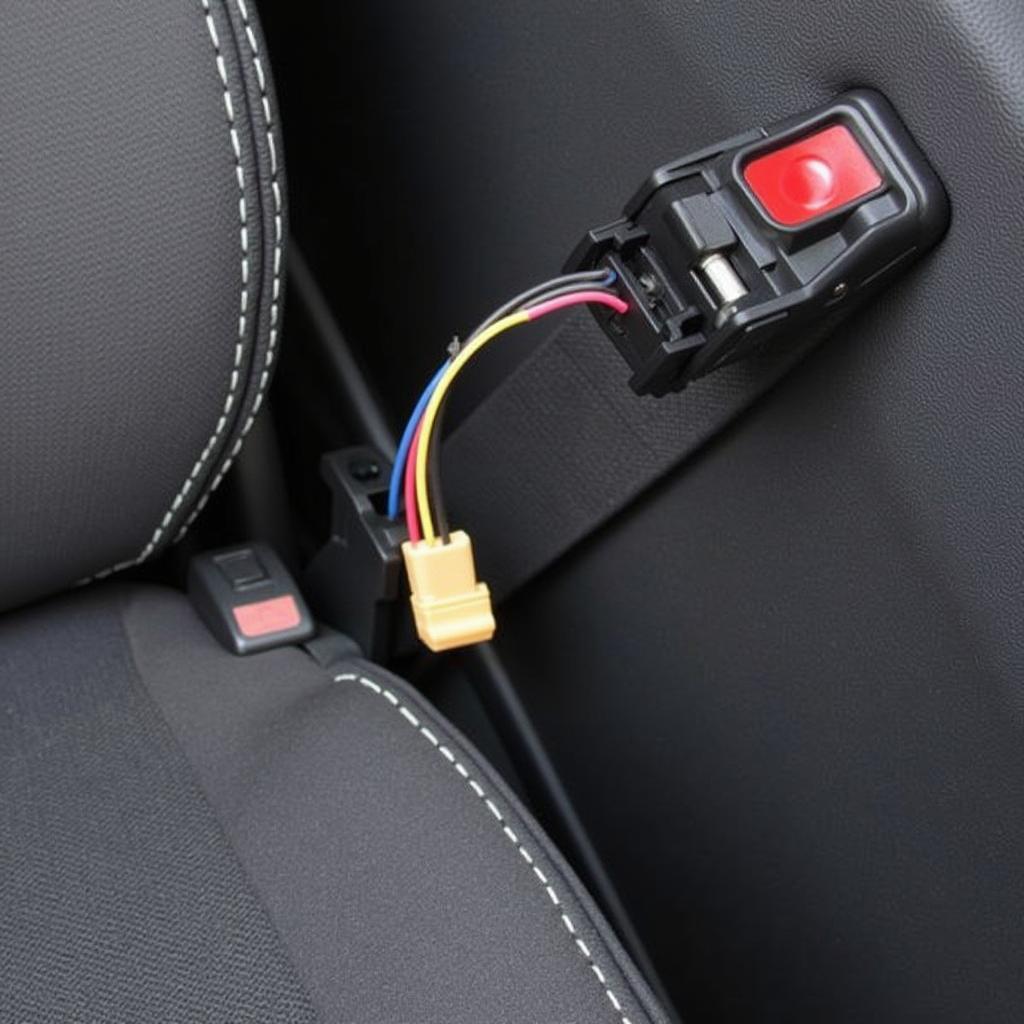A parasitic battery drain can be a real headache, leaving you stranded with a dead car battery. This guide will help you understand what a parasitic draw is, how to identify it, and ultimately, how to fix it, so you can get back on the road.
Understanding Parasitic Battery Drain
A parasitic drain, also known as a “key-off” drain, occurs when something in your vehicle continues to draw power from your battery even after the ignition is turned off. This slow but steady drain can deplete your battery over time, leading to a no-start condition. Everything from faulty wiring to malfunctioning components can be the culprit.
Identifying the Culprit: How to Check for Parasitic Battery Drain
Checking for a parasitic draw requires a few simple tools and a systematic approach. Here’s a step-by-step guide:
-
Gather Your Tools: You’ll need a multimeter (set to measure DC amps), some alligator clips, and potentially a wiring diagram for your specific vehicle.
-
Prepare Your Vehicle: Park your vehicle in a safe location, turn off the ignition, and remove the key. Close all doors, lights, and any other electrical accessories. Let the vehicle sit undisturbed for at least 30 minutes to allow modules to go to sleep. This is crucial for accurate readings.
-
Disconnect the Negative Battery Cable: Carefully disconnect the negative (black) cable from your car battery. Be sure to note the position of any clamps or retainers.
-
Connect the Multimeter: Connect the red lead of your multimeter to the negative battery terminal and the black lead to the negative battery cable.
-
Observe the Reading: Your multimeter will display the current draw. A small drain (less than 50 milliamps or 0.05 amps) is generally considered acceptable. Anything significantly higher indicates a parasitic drain.
-
Isolate the Circuit: Begin removing fuses one at a time, observing the multimeter reading after each removal. When the reading drops significantly, you’ve identified the circuit with the parasitic draw. Consult your vehicle’s wiring diagram to determine which components are on that circuit.
-
Pinpoint the Component: Within the identified circuit, carefully inspect each component for signs of damage, corrosion, or malfunction. This may involve disconnecting and testing individual components.
Common Causes of Parasitic Battery Drain
Several common issues can cause a parasitic battery drain. Some of the most frequent culprits include:
-
Interior Lights: A faulty door switch or a glove box light that doesn’t turn off can drain your battery surprisingly quickly.
-
Faulty Alternator: While less common, a failing alternator can sometimes draw power even when the engine is off.
-
Aftermarket Accessories: Improperly installed aftermarket accessories, such as stereos or alarms, are a common source of parasitic draws.
-
Stuck Relays: A relay stuck in the “on” position can continuously power a circuit, leading to a drain.
-
Glove Box or Trunk Lights: These lights sometimes stay on due to a faulty switch.
 Common Battery Drain Culprits
Common Battery Drain Culprits
Fixing the Drain: Next Steps
Once you’ve identified the source of the drain, the solution can range from a simple fix, like replacing a faulty switch, to a more complex repair, like rewiring a component. If you’re uncomfortable working with electrical systems, it’s always best to consult a qualified automotive electrician. They have the expertise and tools to diagnose and repair complex electrical issues safely and effectively.
“A parasitic draw can be tricky to diagnose,” says John Smith, ASE Certified Master Technician at Smith Automotive. “It often requires a systematic approach and a good understanding of the vehicle’s electrical system. Don’t hesitate to seek professional help if needed.”
Preventing Future Drains
Regular maintenance and careful installation of any aftermarket accessories can help prevent future parasitic drains. Be sure to check all lights and accessories after turning off the ignition and address any electrical issues promptly. A little preventative maintenance can save you a lot of headaches down the road.
Conclusion
Checking for parasitic battery drain is a crucial skill for any car owner. By following the steps outlined in this guide, you can identify and fix the problem, ensuring your car starts reliably every time. Don’t let a parasitic draw leave you stranded. Take control of your vehicle’s electrical system and keep your battery healthy.
FAQ
-
What is a normal parasitic draw reading? A reading below 50 milliamps (0.05 amps) is generally considered acceptable.
-
What tools do I need to check for a parasitic draw? You’ll need a multimeter, alligator clips, and potentially a wiring diagram.
-
Can I fix a parasitic draw myself? Simple fixes like replacing a switch are often DIY-friendly. More complex issues may require professional help.
-
How can I prevent parasitic drains? Regular maintenance and careful installation of accessories can help prevent future drains.
-
What should I do if I can’t find the source of the drain? Consult a qualified automotive electrician for professional diagnosis and repair.
-
Can a parasitic draw damage my battery? Yes, a continuous drain can shorten your battery’s lifespan.
-
What are some signs of a parasitic battery drain? Frequent jump-starts, dimming headlights, and slow cranking are common signs.

